Palazzo Citterio’s exhibition project in Milan, aimed at welcoming the best-known voices of contemporary Italian art, continues. From June 26 to August 31, 2025, the spaces on the second floor of the building on Via Brera will host Anteguerra, a monumental work by Pietro Geranzani (London, 1964), among the most interesting personalities on the national art scene. The exhibition, curated by Angelo Crespi, is developed around a large pictorial triptych, flanked by a selection of twenty preparatory drawings and a display of the book of Qoelet in literary translation by Davide Brullo.
“Geranzani’s pre-war vision,” Angelo Crespi continues, “takes us back to archetypes sedimented in our depths, the shattered bodies, the blood, the skeletons, and in the center that absolute emptiness, the earth becoming concave and tremendous, and low the sun on the horizon, a landscape reminiscent of Kaspar Friedrich, with the burning sky a la Thomas Cole.”
"However, the formal aspect of the Anteguerra triptych," writes Angelo Crespi, Director General Pinacoteca di Brera, Palazzo Citterio, Biblioteca Nazionale Braidense, “harks back in the composition to the great pre-Renaissance season when Beato Angelico tried the first perspective vision in the central part of his ”Last Judgment,“ depicting open sepulchres, and on the side he imagined a hell worthy of Hieronymus Bosch’s nightmares with an anthropophagous Satan in the lowest part.”
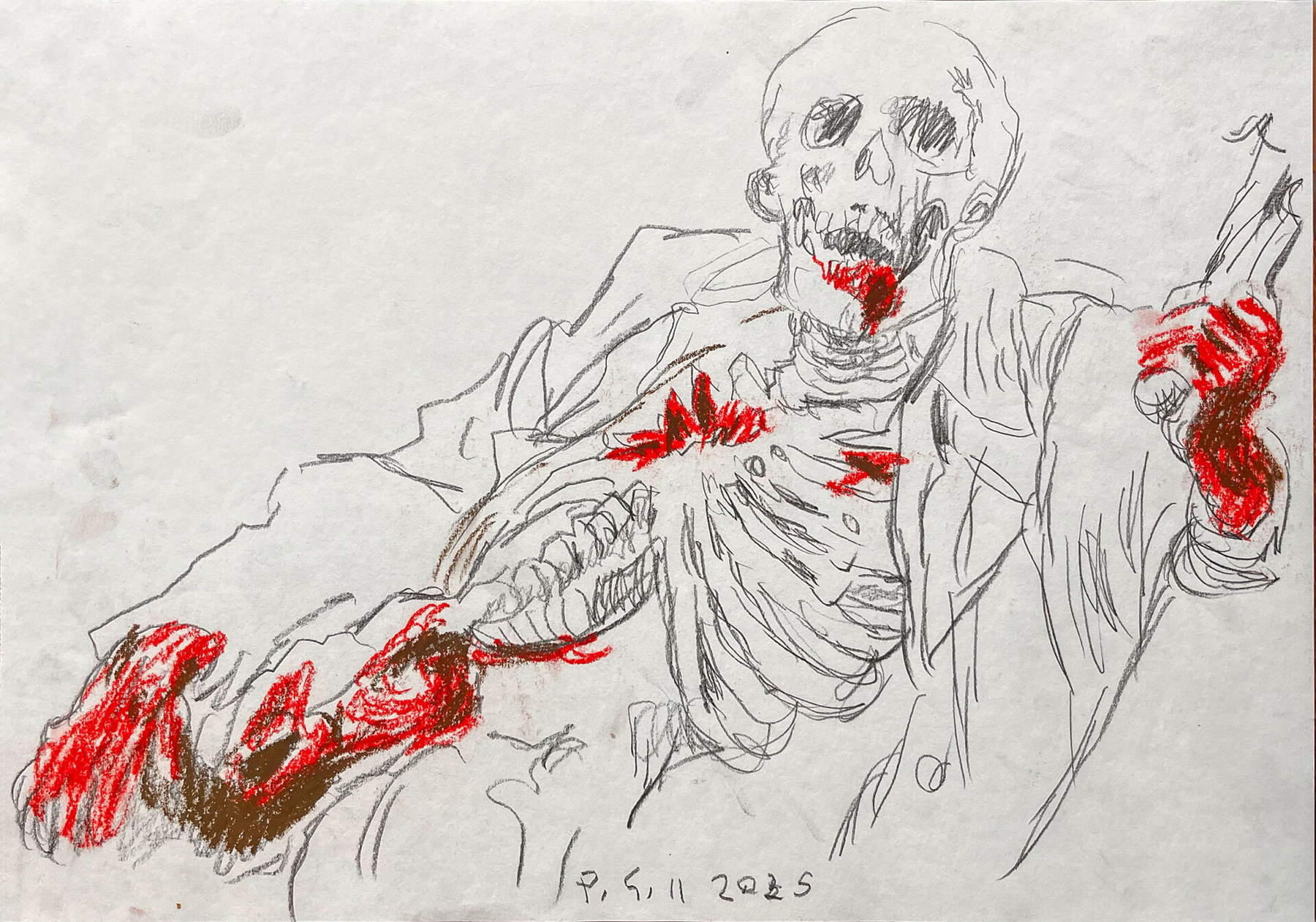

The title chosen for the work, Anteguerra, explicitly recalls a suspended state of mind, one of alertness and perception of imminent danger. The reference to the current climate, marked by new outbreaks of conflict and global instability, is obvious, but Geranzani avoids any didactic approach or ideological interpretation. The theme of war is addressed through the power of images, in a visual narrative that moves by contrasts and leaves room for multiple readings.
The triptych, the heart of the exhibition, is divided into three distinct panels that propose complementary and alternative visions of the same event: armed conflict. The first panel is dominated by the presence of uniformed soldiers surrounding mutilated bodies, obvious victims of violence and devastation. The figures, mangled and disarticulated, confront the viewer with the physical and inhuman dimensions of war, making any form of emotional detachment impossible.
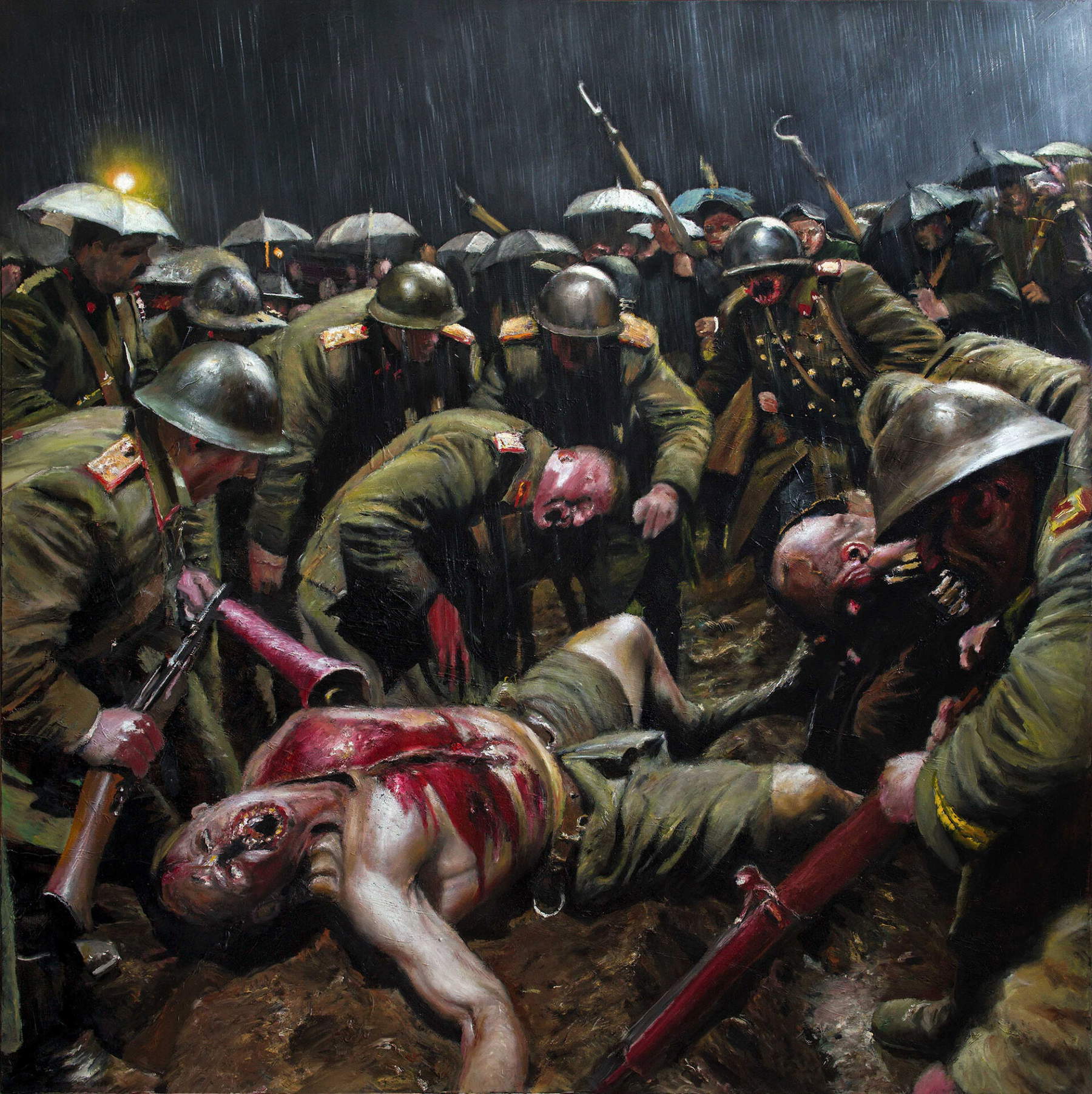
In contrast, the second panel depicts a mass grave, filled with naked bodies, deprived of any identity. There is no narrative, no context: only the silence and static nature of a scene that alludes to the collective loss and erasure of the individual. The two sides of the triptych respond and contrast, while the central scene operates as a symbolic synthesis of the previous visions. In the center, in fact, a huge crater stands out, carved out of a deserted and desolate landscape. The emptiness produced by the explosion seems to echo the existential emptiness generated by the war itself. The compositional choice, devoid of human figures, accentuates a sense of disorientation and disquiet, reinforced by the red sky above the horizon. An ambiguous, almost abstract sun stands out in the distance: its position makes it unclear whether it is rising, bringing with it the possibility of a new beginning, or whether it is waning, making way for a final darkness.
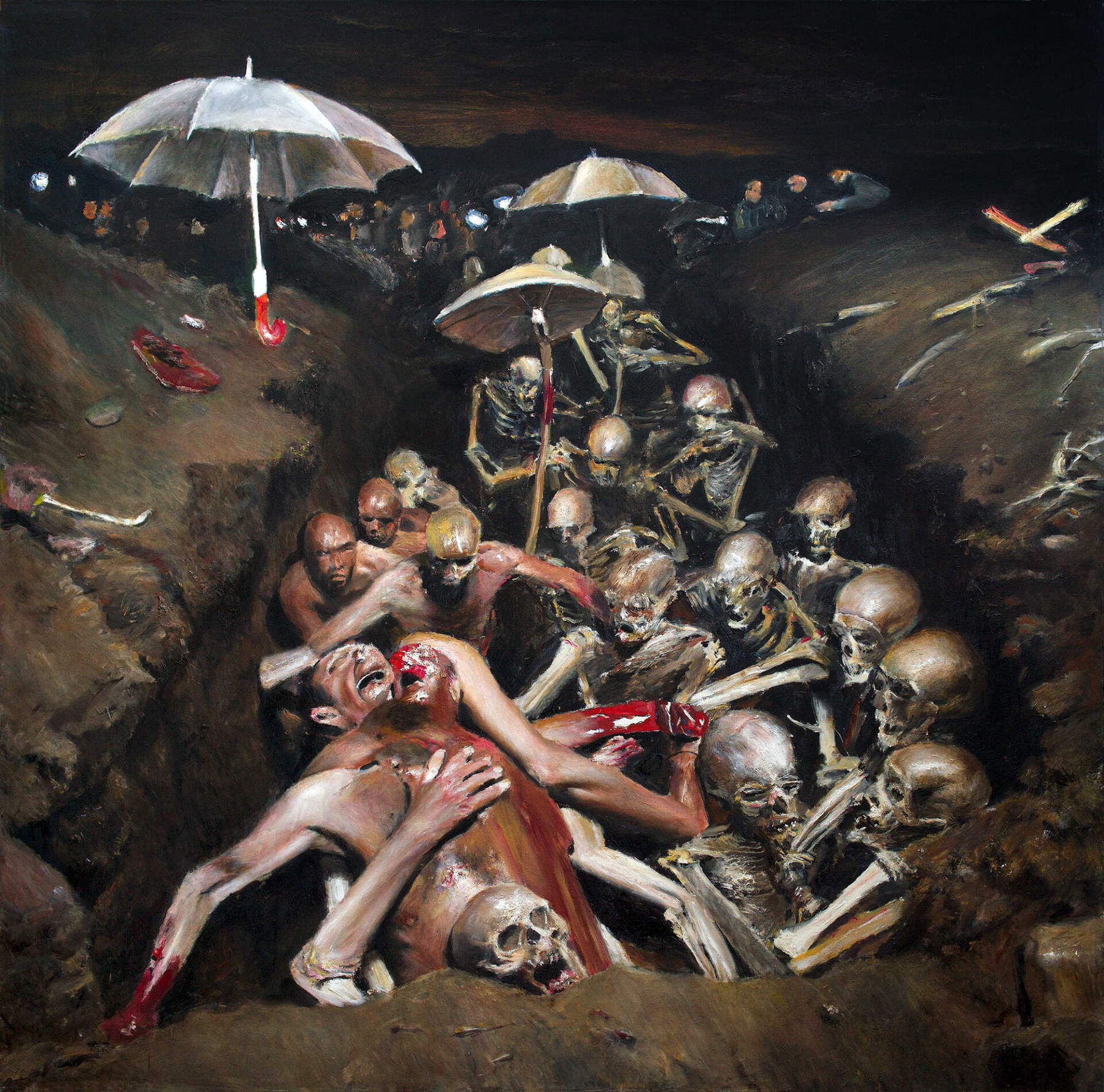
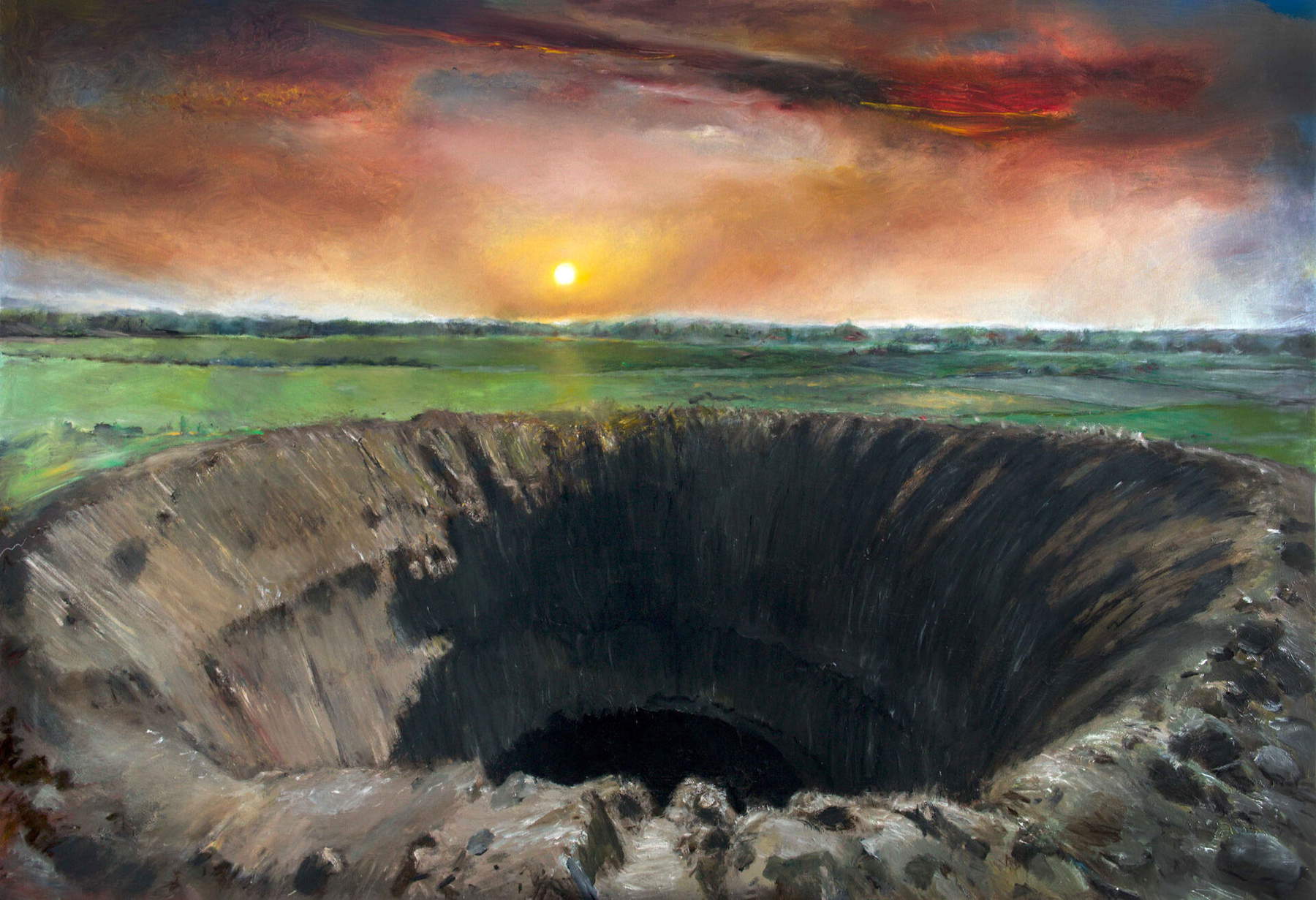
The figurative layout chosen by Geranzani shows a deep awareness of the Western pictorial tradition. The scenes are reminiscent, in composition and narrative tension, of great history painting, but are filtered through an expressionist sensibility that alters proportions, gestures and chromaticism to enhance the emotional charge of the work. Accompanying the triptych, twenty preparatory drawings trace the artist’s creative journey. These are studies, sketches and proofs that highlight the compositional and symbolic choices underlying the work. The drawings, autonomous in themselves, allow us to observe the process that leads Geranzani to a final synthesis dense with references and internal tensions.
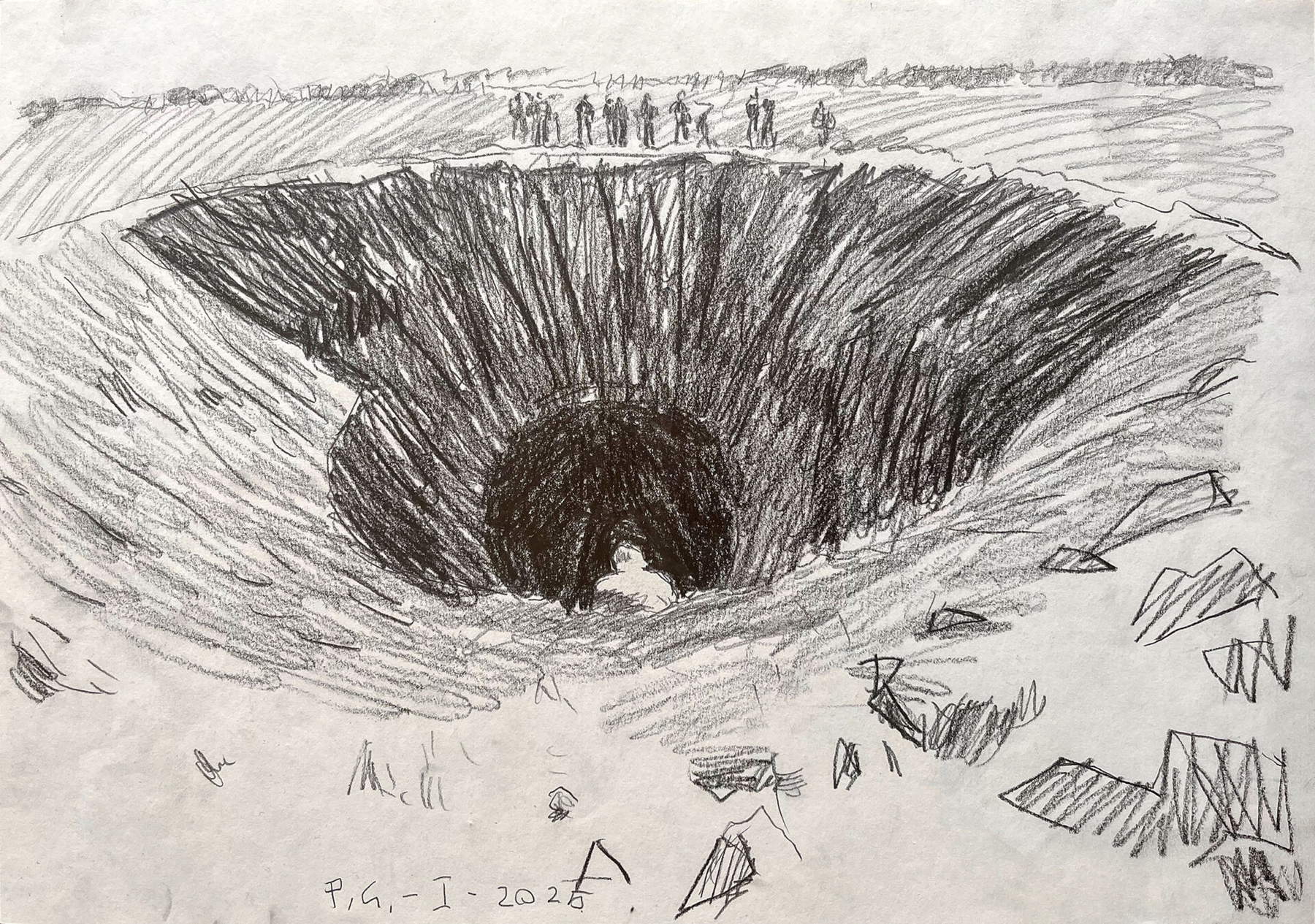

Closing the exhibition path is the presence of the text of Qoelet, an Old Testament book known for its disillusioned and meditative tone, translated by Davide Brullo. The inclusion of this text within the exhibition introduces an additional level of reading. Qoelet, with its reflection on time, vanity and the meaninglessness of life, acts as a verbal counterpoint to Geranzani’s images. Anteguerra ’s installation is part of a broader program with which Palazzo Citterio intends to support and make visible contemporary Italian artistic practices, without renouncing confrontation with the issues of today’s society. The choice of Geranzani and his triptych takes on a paradigmatic value in this sense, proposing a work that reflects on the present but through the solidity of painting, restoring to the viewer a space of silence and contemplation.
Pietro Geranzani spent his childhood and adolescence between Germany and Switzerland. He currently lives and works in Milan. He trained at the Ligustica Academy of Fine Arts in Genoa under the direction of Gianfranco Bruno. From the beginning, he cultivated a strong interest in drawing and painting: after an initial period marked by neo-expressionist influences, matured in the 1980s, he progressively oriented his research toward a painting of a symbolist matrix.
Starting in the early 2000s, he began a personal exploration in the field of video art, making short and medium-length films. In 2003 he was invited to participate in the exhibition Fuori contesto. Viaggio intorno all’opera at the Galleria d’Arte Moderna in Genoa; two years later he took part in the exhibition Il Male - Esercizi di Pittura Crudele, curated by Vittorio Sgarbi at the Palazzina di Caccia di Stupinigi (Turin). In 2009 he held the solo show Ombre Ammonitrici at the Palazzo Ducale in Genoa, and in 2011 he exhibited at the 54th Venice Art Biennale. His works are part of the permanent collections of the MART - Museum of Modern and Contemporary Art of Trento and Rovereto, the Gallery of Modern Art of Genoa, and the Villa Croce Museum.
Hours: Thursday to Sunday, 2-7 p.m.
Admission: full, €12.00; reduced, €8.00 (valid only for Palazzo Citterio)
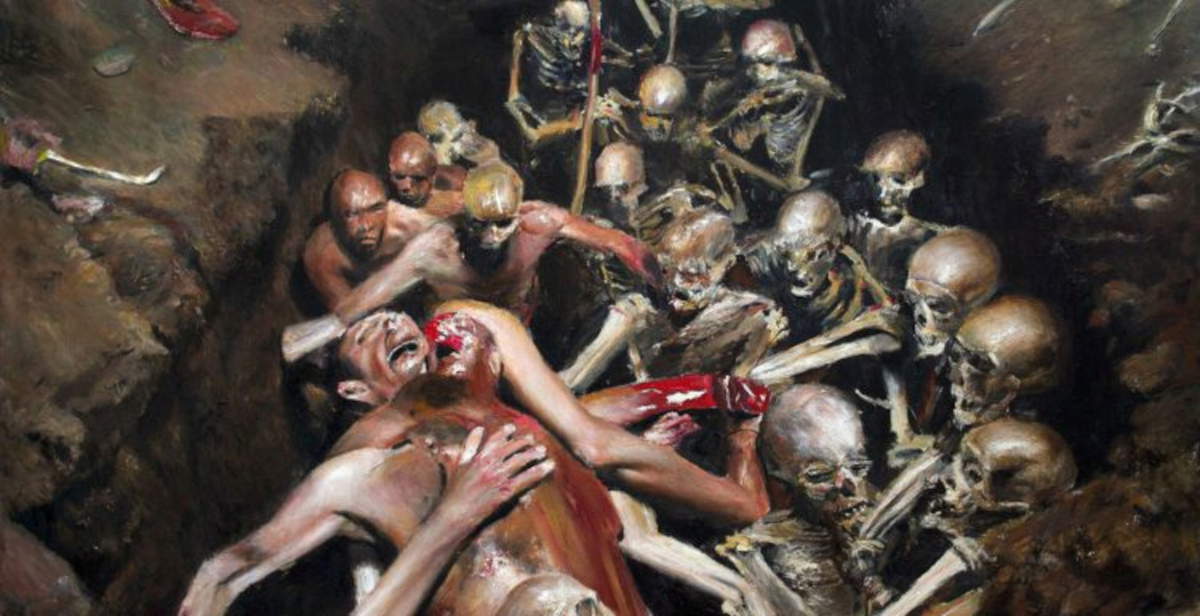 |
| At Palazzo Citterio (Milan) Pietro Geranzani exhibits a triptych against the horror of war |
Warning: the translation into English of the original Italian article was created using automatic tools. We undertake to review all articles, but we do not guarantee the total absence of inaccuracies in the translation due to the program. You can find the original by clicking on the ITA button. If you find any mistake,please contact us.